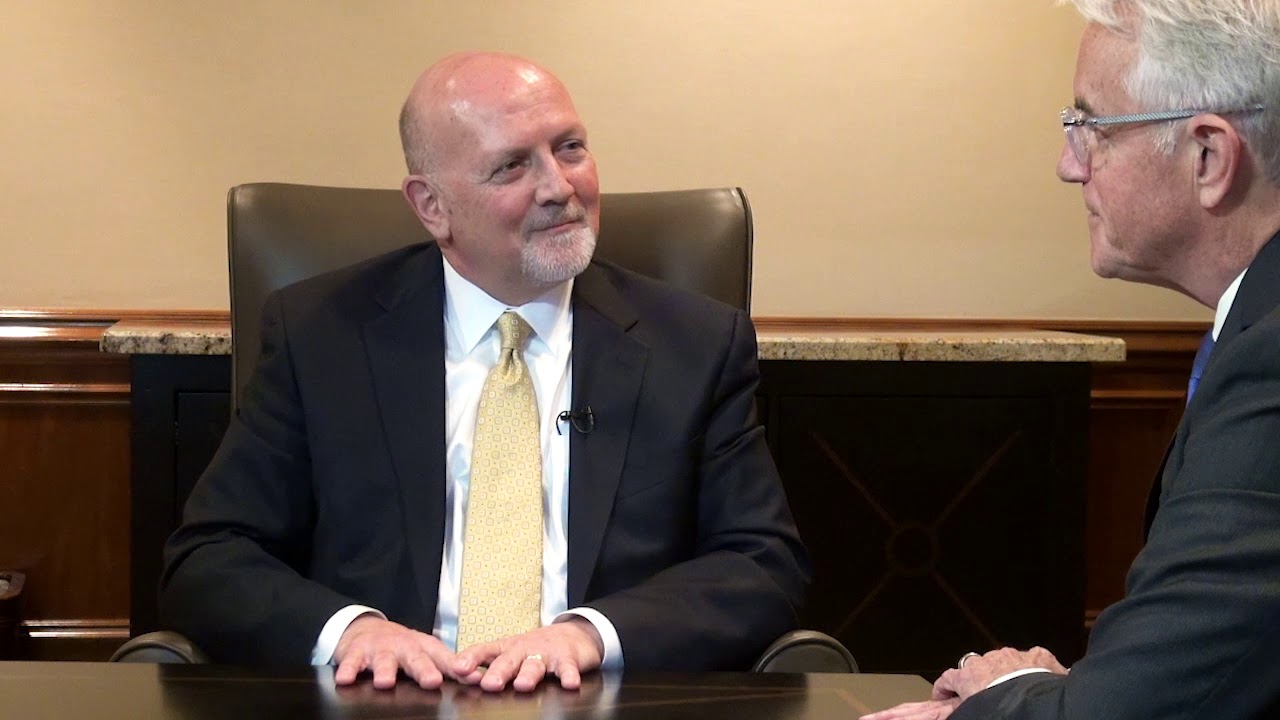Solar Energy Can Lower Costs and Reduce Emissions?

Russ: This is PKF Texas Entrepreneur’s Playbook. I’m Russ Capper, this week’s guest host, and I’m coming to you from the Gulf Coast Regional Family Forum. I’m very pleased to have as my guest now, Richard Gruber, Co-founder and Chief Commercial Officer of MERIT SI. Richard, welcome to the show.
Richard: Thank you, Russ.
Russ: You bet. Tell us about MERIT SI.
Richard: MERIT SI is a two-year-old firm headquartered in Houston. Our focus is developing renewable strategies and solutions for energy, water and chemical companies to help them drive lower costs, reduce their emissions and improve their overall stakeholder awareness.
Russ: Ok. So, renewables, are we talking about solar and wind?
Richard: Principally, solar and solar with battery storage, and typically with advanced controls. And located at their points of demand for these companies, so where they consume it is where we site it.
Russ: Which of those three—two years old, you’re still relatively new. Which of those three are you having the most success?
Richard: We’re focused very much in the pipeline side so with energy companies that have existing or are building new infrastructure in, principally, the crude, product or NGL space. But also, gas processing plants and other places where they have high demand – so, refineries, chemical plants, fractionators, all those kinds of things.
Russ: That’s real interesting. So, you’re taking solar energy to oil and gas companies, essentially.
Richard: Yeah. We’re integrating it into their infrastructure in a smart way.
Russ: And how are you being received?
Richard: We’re being received well. Everybody wants to hear about it, everyone is interested, but it takes a C-suite sponsorship in the cultures of these firms, I think, to get decisions made. Folks have to feel safe that the CEO says, “Ok, I think that makes sense. Let’s go take a look at it.” When we get to that C-suite level and have that dialogue and explain the opportunity, it moves much faster.
Russ: I would think, without knowing much in detail, that you’re both potentially saving money and reducing emissions in the environment, is that right?
Richard: Those are the two drivers, and the first one is really cost savings. It doesn’t really go anywhere with the companies that we talk to if we’re not driving down operating costs. The emissions reduction is another benefit. There are a couple of other opportunities, though, and one is operating resilience.
So, where the grid is not as stable as in other locations, or to prepare against a hurricane Sandy event, or other types of uncontrolled events, to the extent they’ve got onsite generation or adjacent with some battery storage. They may not be able to go 24/7 in their operation, but if they can operate 8-10 hours a day and maintain until the grid is back up, it’s certainly an advantage vs. their peers. It keeps the cash register moving.
Russ: For those of use who don’t know in detail what a pipeline looks like along the way, I assume at various points along any pipeline that’s headed downstream there is some kind of pump generation there that’s technically, usually powered by electricity.
Richard: That’s right, certainly in the liquids. If you’re moving liquids – water, natural gas liquids, or crude, or products, gasoline – it’s exclusively typically electric driven. It’s very power dense, and it’s a great place, if you think about the rural part of the country, to get crude from where it’s produced to where people want to consume it or refine it. There’s a lot of opportunity in those pump stations every 80 miles.
Russ: Every 80 miles. Ok, power dense, meaning they use a lot of electricity.
Richard: They do. They use a lot of power at that point and push that crude down the stream to the next pump station.
Russ: So, you can’t replace that power completely with solar?
Richard: That’s right. We complement what we have with a grid. So, they’re never worse off reliability wise, because they’re always connected to the grid. Our controls architecture makes sure that this interconnection—behind the utility meter, effectively, providing them wholesale power to offset their retail price that they’re paying, in essence. So, that’s the advantage.
Russ: Ok, so does it work—when it works, when the solar power pump works, are you not using anything from the grid or does it assist power from the grid?
Richard: It depends on the sizing of the facility and some of the market rules, but there are times where all of the power would be going around all the capacity at their pumps. And the pump doesn’t know. It’s a kilowatt – it’s happy as it could be.
Russ: You have a history of being in the solar business, right?
Richard: Right, we were, very early, the founder, the co-founder with me, Tom Kuster and I were officers at First Solar, and we actually started developing solar power plants for the grid before we were adopted, if you will, into First Solar. So, back in 2007, we developed some of the early utility scale power plants in the U.S. After that, did several thousand megawatts of projects we developed, designed, engineered, constructed and integrated into the grid.
Russ: I’ve sort of had a history of doing interviews with people like yourself and people in oil and gas, and I’m always told about the density and the portability of fossil fuels, but I’ve also noticed that the cost of solar continues to come down. Adding battery function to it has really made a significant difference. I’m even of the opinion that solar can survive now without subsidies. Is that accurate?
Richard: If you look at studies from people like Lazard, they looked at tax credit and post-tax credit competitiveness of a number of technologies, fossil and renewables, and it shows today that these technologies, from the time of day they deliver the power, which is an expensive time of day, that they are more cost effective than the alternatives.
Russ: Really interesting. So, you’re set up along a pipeline. Is it mechanically significant? You don’t even have an extra pump – you just have an extra source of electricity – but your extra source of electricity has to have photovoltaic solar collectors, right?
Richard: That’s right. I don’t want to focus too much on the pipeline segment. There are other parts, as we said, that are in the value chain of that industry vertical and others. It’s simply where power dense work needs to happen to process something, move something, drive something. Probably the key element is, can they consume the power across the timeframe during the day consistently when we’re producing.
Russ: I guess water would be similar to an oil pipeline, but what would chemistry and using for chemicals, how would you benefit the producer at that point?
Richard: It’s a process, chemicals. It’s just an energy intensive business. Actually, turning natural gas into LNG is a very energy intensive business.
Russ: A lot of that going on these days, too.
Richard: A lot of that going on these days, too, that’s right.
Russ: Before I let you go, I’m curious, the name is MERIT SI. What does the SI stand for?
Richard: It stands for Sustainable Infrastructure. The model is to have sustainable cost advantage compared to your peers. Reduce your risk, both cost wise and operating wise. And enhance the sustainable relationship with a whole host of stakeholders. We have not gone to one place where employees have not been, across the board, regardless of demographic role within the firm, gender, have not been enthusiastic to think that their company is looking at this. And so, we think institutional shareholders feel the same way, and regular shareholders and board members, because I think they think it’s smart business.
Russ: Well, Richard, I really appreciate you sharing your story with us.
Richard: Thanks, Russ. Pleasure.
Russ: You bet. And that wraps up my discussion with Richard Gruber with MERIT SI. This has been another Thought Leader Production brought to you by PKF Texas – The Entrepreneur’s Playbook.

